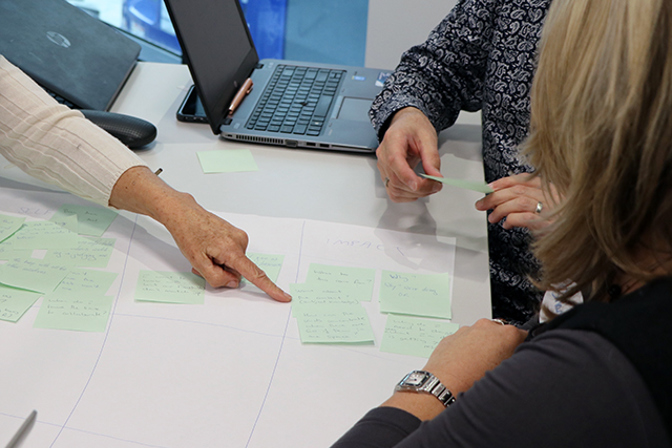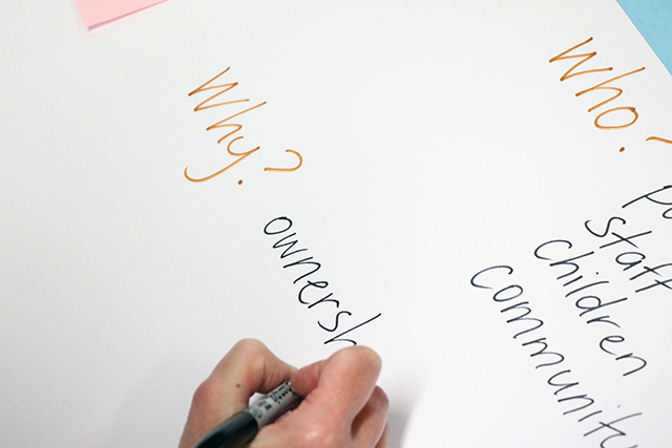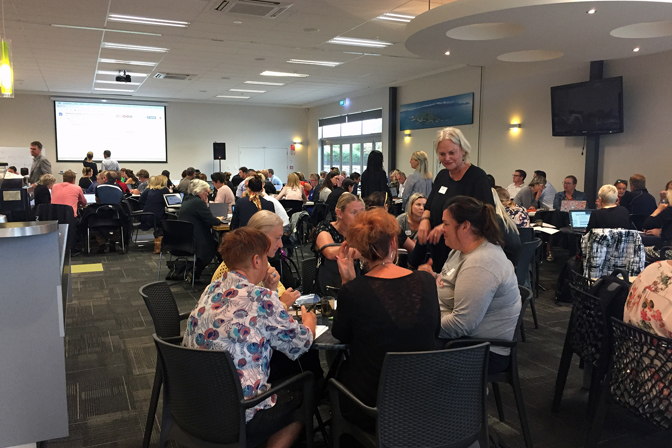NCEA kickstart project - Breaking down silos
In early 2017, a group of secondary school teachers volunteered to be part of a project at a Grow Waitaha community of practice meeting. The project’s aim was to create Level 1 NCEA assessments using achievement standards from several subject domains to break down siloed subject boundaries.
Teachers from nine different Canterbury schools worked collaboratively to design interdisciplinary assessment tasks for Year 11 students. These tasks were sent to NZQA for feedback and some teachers trialled them with students to get their comments. This story focuses on the teachers’ professional learning throughout this process.
The schools and teachers who began this inquiry were:
- Avonside Girls’ High School
- Burnside High School
- Lincoln High School
- Mairehau High School
- Oxford Area School
- Papanui High School
- St Andrew’s College
- St Margaret’s College
- Te Ao Tawhiti
Project aims
The aims of this project were to:
- Break down the perception of curriculum–bound/siloed NCEA achievement standards as a barrier for innovation in the senior school.
- Investigate opportunities for teachers to be more flexible in their approach to NCEA, as they co–create, trial, and share authentic senior learning activities which are assessed by achievement standards from at least two different subject domains.
- Increase wellbeing and reduce anxiety levels in senior students due to the overloading of internally assessed NCEA tasks.
- Investigate commonalities in achievement standards across different curricular domains.
- Explore how teachers can create single assessment opportunities that relate to multiple achievement standards across different curriculum domains.
- Work collaboratively with colleagues across different curriculum areas.
Overview of assessments
The developed tasks most often combined social science standards with those from the English domain, but there were examples of other cross curricular assessment tasks.
Successes
When asked what worked well, those involved in this project shared the following:
Teachers:
- Opportunities for collegial discussions and sharing of ideas across different faculties.
- Valuable professional development about another subject area in terms of content, pedagogies, successful learning strategies, skills, and competencies.
- Pushing some traditional boundaries for faculties used to siloed thinking, and often tunnel vision.
- Opportunity to make the most of natural links and connections between different subject disciplines.
“The support of working together was invaluable, though not sharing non–contacts was challenging. It was good PD learning about another subject and it was a springboard for other ideas of collaboration.”
(Kathryn and Rachel, Lincoln High School)
Students:
- Higher levels of engagement and confidence.
- Increased level of task completion and hand–in rate of assessments.
- Improved writing, research, and overall grades.
- More efficient use of time – doing two assessments in a single activity.
- Increased opportunities for authentic contexts for learning.
- More time spent on deepening learning and skill development.
- Increased number and variety of feedback opportunities from the teachers.
- Ability to see and use similar skills across multiple areas.
“Students were able to spend more time developing the skills we were trying to teach, as the focus wasn’t on preparing them for two separate assessments. Deep learning could occur as the two learning areas reinforced what was happening.”
(Anita, Avonside Girls’ High School)
Challenges
When asked what challenges they faced, those involved in the project shared the following:
- Time constraints: The project required time for thinking, meeting together, discussion, planning, implementing, and reviewing. Finding enough time was a major challenge for most of the schools involved.
- Project timing: The project took place in term 4 which brings its own pressures. It would have been easier to begin planning the project at the end of a school year for implementation the following year.
- Staff resistance: Some teachers held fast to their subject specific knowledge, skills, and expertise and often reverted back to siloed ways of thinking. It is important to involve those who are keen rather than those who are coerced to be involved.
- Different perceptions: There were different levels of understanding and buy in from those directly and indirectly involved. Spend time establishing a common purpose and stick to it throughout the development and implementation stages.
- School structures and systems: It is difficult to fit collaboration into existing systems. Look at how timetables can be modified or tweaked to support collaboration and integration of teaching.
- Space: It was difficult for some schools to find the space to teach two classes at the same time, although you don’t need two teachers timetabled onto two classes at the same time to teach the students collaboratively.
Advice to others
The teachers involved in this project have offered advice to anyone considering this way of working at senior secondary level:
- Provide sufficient time for those involved. It takes longer than you think and can be messy at all stages.
- Collaboration is not easy. Any change is complex, so don’t give up. It is worth it because of the benefits for students and staff.
- Expect the implementation dip and plan for it.
- Stick to your vision. Be clear on what you want to achieve and why you are doing this.
- Ask for volunteers to co–design, trial, and prototype. Seek out those who are open minded, who work well with others, who are agile and reflective thinkers, who are keen to step outside their comfort zones and not hold fast to their specific subject areas.
- Be prepared to give something up from your subject area.
- Look at your focus or theme first then retrofit relevant achievement standards.
- If doing more than one unit, take small steps continuously and be flexible with planning so it grows organically to suit student needs.
- Peer review your tasks with either your principal’s nominee (PN) or another school.
- Start at NCEA Level 1, where it is easier to make cross curricular links. The higher you go, the more specialised the achievement standards become.
- Make sure that your senior leaders are on board, and maybe even recruit some middle leaders to provide support and guidance.
- The timetabler is an important part of this process.
- Involve parents and whānau to build their understanding so they have the confidence to allow you to do something new and different when level 1 credits are at stake.
Conclusion
This project was an inquiry into how teachers can break down traditionally siloed subjects at senior secondary level by co–designing assessment tasks to fit more than one subject area. NZQA assisted by critiquing the tasks to ensure reliability and validity at NCEA Level 1.
The results are a range of amazing cross–curricular assessments that allow students to experience success from a number of achievements standards from different subject related domains. One school has since established an innovative integrated prototype class of Year 11 students who spend the majority of their week working with several teachers in a cross–curricular collaborative environment to learn and achieve successfully at NCEA Level 1.
“We do think that these types of projects are worth the investment for both teacher and students. Once we got the hang of it, it reduced our stress and workload and was really effective for the students. They achieved well and had a huge sense of success and achievement.”
(Rachel and Kathryn, Lincoln High School)
Additional resources
NCEA in Context by R Hipkins, M Johnston, and M Sheehan, 2016.
Remixing NCEA Achievement Standards: A Curriculum Integration Design Deck by R Hipkins, 2017.
The Rhetoric and the Reality – New Zealand Schools and Schooling in the 21st Century by R Hood, 2015.






